
The Benedictines, officially the Order of Saint Benedict, are a monastic religious order of the Catholic Church following the Rule of Saint Benedict. They are also sometimes called the Black Monks, in reference to the colour of their religious habits. They were founded by Benedict of Nursia, a 6th-century monk who laid the foundations of Benedictine monasticism through the formulation of his Rule of Saint Benedict.

Augustinians are members of Christian religious orders that follow the Rule of Saint Augustine, written in about 400 AD by Augustine of Hippo. There are two distinct types of Augustinians in Catholic religious orders dating back to the 12th–13th centuries:
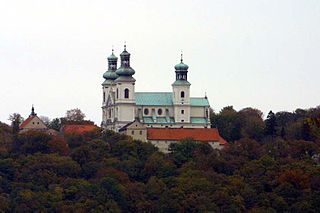
The Camaldolese Hermits of Mount Corona, commonly called Camaldolese is a monastic order of Pontifical Right for men founded by Saint Romuald. Their name is derived from the Holy Hermitage of Camaldoli, high in the mountains of central Italy, near the city of Arezzo. Its members add the nominal letters E.C.M.C. after their names to indicate their membership in the congregation.
Prayer has been an essential part of Christianity since its earliest days. Prayer is an integral element of the Christian faith and permeates all forms of Christian worship. Prayer in Christianity is the tradition of communicating with God, either in God's fullness or as one of the persons of the Trinity.

In the Catholic Church, a religious order is a community of consecrated life with members that profess solemn vows. According to the 1983 Code of Canon Law, they are classed as a type of religious institute.
Devotio Moderna was a movement for religious reform, calling for apostolic renewal through the rediscovery of genuine pious practices such as humility, obedience, and simplicity of life. It began in the late 14th-century, largely through the work of Gerard Groote, and flourished in the Low Countries and Germany in the 15th century, but came to an end with the Protestant Reformation. It is most known today through its influence on Thomas à Kempis, the author of The Imitation of Christ, a book which has proved highly influential for centuries. The Devotio Moderna wrote in IJssellands, a written language which stood in between Middle Dutch and Middle Low German.
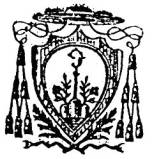
The Sylvestrines are a congregation of monks of the Order of St. Benedict who form the Sylvestrine Congregation. The Sylvestrines use the post-nominal initials O.S.B. Silv.. The congregation was founded in 1231 by Sylvester Gozzolini. They are members of the Benedictine Confederation. The congregation is similar to others of eremitical origin, in that their houses are not raised to the status of an abbey, which would entangle the monasteries more strongly in the affairs of the world. The congregation, though, is led by an abbot general, the only abbot it has, who supervises all the houses of the congregation.

The Benedictine Confederation of the Order of Saint Benedict is the international governing body of the Order of Saint Benedict.

Canons regular are canons in the Catholic Church who live in community under a rule and are generally organised into religious orders, differing from both secular canons and other forms of religious life, such as clerks regular, designated by a partly similar terminology.

The Vallombrosians are a monastic religious order in the Catholic Church. They are named after the location of their motherhouse founded in Vallombrosa, situated 30 km from Florence on the northwest slope of Monte Secchieta in the Pratomagno chain. They use the abbreviation O.S.B. Vall. to distinguish themselves from the Benedictines, who use the abbreviation O.S.B.
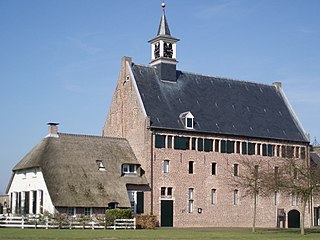
The Congregation of Windesheim is a congregation of Augustinian canons regular. It takes its name from its most important monastery, which was located at Windesheim, about four miles south of Zwolle on the IJssel, in the Netherlands.

Lawrence Justinian was a Venetian Catholic priest and bishop who became the first Patriarch of Venice. He is venerated as a saint by the Catholic Church.

San Giorgio in Alga is an island of the Venetian lagoon, northern Italy, lying between the Giudecca and Fusina.

The Diocese of Treviso is Latin Church ecclesiastical territory or diocese of the Catholic Church in the Veneto, Italy. It is a suffragan diocese in the ecclesiastical province of the metropolitan Patriarchate of Venice.
Giovanni Andrea Cortese was an Italian Cardinal and monastic reformer.
A religious institute is a type of institute of consecrated life in the Catholic Church whose members take religious vows and lead a life in community with fellow members. Religious institutes are one of the two types of institutes of consecrated life; the other is that of the secular institute, where its members are "living in the world".
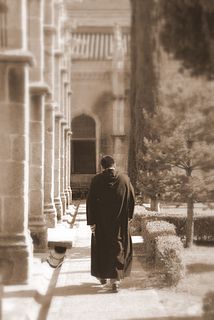
Prayer has been an essential part of Christianity since its earliest days. As the Middle Ages began, the monastic traditions of both Western and Eastern Christianity moved beyond vocal prayer to Christian meditation. These progressions resulted in two distinct and different meditative practices: Lectio Divina in the West and hesychasm in the East. Hesychasm involves the repetition of the Jesus Prayer, but Lectio Divina uses different Scripture passages at different times and although a passage may be repeated a few times, Lectio Divina is not repetitive in nature.

The Abbey of Santa Giustina is a 10th-century Benedictine abbey complex located in front of the Prato della Valle in central Padua, region of Veneto, Italy. Adjacent to the former monastery is the basilica church of Santa Giustina, initially built in the 6th century, but whose present form derives from a 17th-century reconstruction.
The Canons Regular of San Giorgio in Alga were a congregation of canons regular which was influential in the reform movement of monastic life in northern Italy during the 15th and 16th centuries.
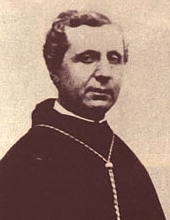
Pietro Casaretto, O.S.B. (1810-1878) was an Italian Benedictine monk who established the Subiaco Congregation, an international federation of Benedictine monasteries, now part of the Subiaco Cassinese Congregation.














